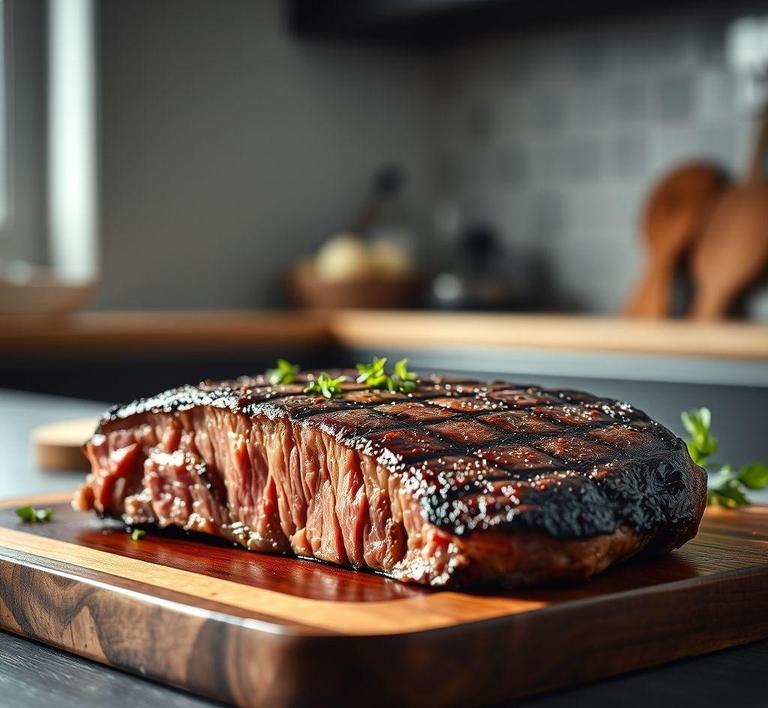Refreezing cooked meat can be a bit of a tricky subject, but it’s not as complicated as it seems. If you’ve cooked more meat than you can eat or need to store leftovers for later, understanding the right way to refreeze cooked meat is essential to keeping it safe and tasty. The process involves knowing when and how you can refreeze without risking bacteria growth or compromising texture. In this guide, we’ll break down the best practices, things to consider before refreezing, and tips for ensuring your cooked meat stays delicious when you decide to enjoy it again!
Can You Refreeze Cooked Meat?

The question of whether or not you can refreeze cooked meat is one that many home cooks and food enthusiasts have pondered, especially when faced with leftovers. The simple answer is: yes, you can refreeze cooked meat, but there are important considerations to keep in mind in order to do so safely and maintain the best quality of the food.
When we talk about refreezing, we’re referring to the process of thawing cooked meat and then freezing it again after a period of time. While this practice is not inherently dangerous, several factors must be accounted for, such as the way the meat was handled, how long it was stored, and whether it has been kept at safe temperatures throughout the process. One crucial thing to note is that refreezing cooked meat after it has been thawed at room temperature or left unrefrigerated for long periods can pose serious health risks. Bacteria can multiply rapidly at these temperatures, so it’s always essential to ensure that the meat was kept at a safe temperature of 40°F (4°C) or below during its thawing phase.
The type of meat matters as well. Lean meats like chicken, beef, or pork can typically handle the refreezing process better than more delicate meats or those that have been prepared in a sauce or gravy, which may separate when thawed again. Additionally, meats that have been cooked in a way that keeps them moist (e.g., slow-cooked stews) may fare better than dry, grilled meats, which may lose texture and flavor after the second freeze.
How To Refreeze Cooked Meat?
To successfully refreeze cooked meat while maintaining safety and quality, follow these steps:
- Cool the Meat Quickly: One of the most important steps is to ensure that the cooked meat is cooled properly before refreezing. Never refreeze meat that’s still hot, as this can cause the formation of ice crystals and deteriorate the meat’s texture. Let it cool down to room temperature for about two hours (or one hour if the room temperature is above 90°F/32°C), but never leave it out for longer than that. If you need to speed up the cooling process, place the meat in a shallow container or spread it out on a baking sheet to allow heat to dissipate faster.
- Package Properly: Packaging is crucial to preserve the quality of the meat. Wrap it tightly in plastic wrap or aluminum foil, ensuring there is minimal exposure to air. You can also use freezer-safe bags or containers that have a good seal. For added protection, remove as much air as possible from bags using a vacuum sealer or by squeezing air out manually. This helps prevent freezer burn, which can result in dry, unappetizing meat when thawed.
- Label and Date: Labeling your meat with the date of refreezing ensures that you can track how long the food has been frozen. Freezing cooked meat doesn’t make it safe indefinitely. It’s best to use it within 2 to 3 months for the highest quality. While refrozen meat can last longer, its taste and texture will degrade over time.
- Thaw Properly Before Reheating: When it’s time to thaw your refrozen meat, the safest way to do so is by placing it in the refrigerator. This allows the meat to thaw evenly without reaching unsafe temperatures. If you’re in a hurry, you can also use the microwave or cold water thawing method, but be sure to cook the meat immediately afterward if using these methods. Avoid thawing at room temperature, as this can promote the growth of bacteria.
- Reheat Thoroughly: Once thawed, ensure that the meat is reheated to an internal temperature of at least 165°F (74°C) to kill any bacteria that may have grown during the thawing process. Use a food thermometer to verify the temperature, and stir the meat regularly to ensure even heating.
Quality Impact
Refreezing cooked meat can have an impact on both texture and flavor, and understanding these changes is essential if you’re planning to enjoy the meat at its best.
- Texture: The texture of cooked meat is one of the most noticeable changes after refreezing. Freezing causes water molecules in the meat to form ice crystals, and these ice crystals can rupture the meat fibers. This process, especially when repeated, leads to a mushier or drier texture when the meat is thawed and reheated. This is particularly true for meats that are lean or those that have been cooked until dry, like roasted turkey or grilled steak. On the other hand, meats that have been braised or slow-cooked (such as pulled pork or stew meat) tend to fare better, as they are already moist, which helps them retain some of their moisture after refreezing.
- Flavor: Flavor changes can also occur, particularly in meats that have been seasoned or marinated before cooking. The freezing process can cause some of the flavors to become less pronounced or even slightly altered. This happens because the moisture lost during freezing may carry away some of the seasoning that gives the meat its distinctive taste. Additionally, any sauces or gravies added to the meat can separate and affect the flavor profile, although this can sometimes be mitigated by adding more sauce during reheating.
- Moisture Loss: One of the main concerns when refreezing cooked meat is moisture loss. This is what leads to the dry, stringy texture often associated with reheated, refrozen meats. While this is inevitable to some degree, slow cooking or braising methods, which retain more moisture to begin with, help mitigate this issue. If your meat was particularly dry to start with, the refreezing process might result in an even more unappetizing texture.
- Freezer Burn: Over time, meat that is improperly wrapped or stored in the freezer may develop freezer burn, which causes unsightly discoloration (grayish or whitish spots) and a dried-out texture. Freezer-burned meat is safe to eat but will lack flavor and may have a tough, leathery texture.
Refreezing cooked meat is indeed possible, but the key to doing it safely lies in proper handling, packaging, and storage. If done correctly, refrozen cooked meat can be just as safe to eat as freshly cooked meat, although there may be slight changes in texture and flavor. While the meat may lose some of its original appeal after the second freeze, proper packaging and following safety guidelines will ensure the best possible result.
Ultimately, if you find yourself with leftover cooked meat, it’s best to evaluate whether refreezing is the right option based on the type of meat, how it was prepared, and whether you plan to consume it within a few months. For the highest quality, aim to refreeze cooked meat only once, and always handle it with care to prevent the growth of harmful bacteria. With the right precautions, your refrozen cooked meat can still make for a convenient and satisfying meal.
Is It Safe To Refreeze Cooked Meat?
Refreezing cooked meat can be a tricky topic, as it’s not always clear whether it’s safe or advisable. The main concern with refreezing cooked meat lies in the way the freezing process affects both the texture and safety of the meat. When meat is cooked and frozen, it can still harbor bacteria or pathogens, and the conditions that come with freezing, thawing, and refreezing can encourage the growth of harmful bacteria, especially if the meat has been sitting out too long at room temperature.
The key factor is how well the cooked meat was handled prior to being refrozen. If it was cooked, stored, and thawed properly, refreezing is generally considered safe, but there are important precautions to follow. The USDA recommends that meat should only be refrozen if it has been thawed safely, i.e., in the refrigerator, rather than at room temperature or in warm water. Once the meat has been refrozen, it can lose quality and flavor, becoming drier and less appetizing, but the risk of foodborne illness is relatively low as long as the handling process was hygienic and careful.
That being said, refreezing cooked meat should only be done once. The reason for this is simple: each cycle of freezing and thawing increases the chances of bacterial contamination and degrades the meat further in terms of taste and texture. For safety, the best approach is to thaw and use cooked meat promptly, or to freeze it only once and consume it within a reasonable time frame.
Signs That Cooked Meat Should Not Be Refrozen
It’s crucial to pay attention to certain warning signs when considering whether to refreeze cooked meat. Here are some key indicators that your cooked meat may no longer be safe to refreeze:
- Spoiled or Off Smell: A strong, sour, or off-putting odor is one of the first signs that the cooked meat has gone bad. Bacteria can grow on thawed meat, and once this happens, the smell will be unmistakable. If the meat emits a foul odor, it should not be refrozen or consumed.
- Slimy or Sticky Texture: When thawed meat develops a slimy, sticky surface, this is a clear sign of bacterial growth. Even if the meat seems fine visually, a change in texture can indicate contamination, making it unsafe for refreezing.
- Discoloration: Refrozen meat can sometimes turn a dull or grayish color, but if you notice any significant changes in color such as dark spots, unusual hues, or mold, it’s a red flag. Mold or patches of discoloration indicate spoilage and should not be refrozen or consumed.
- Excessive Liquids: If the cooked meat has released a large amount of liquid after thawing, this can be a sign that it wasn’t stored correctly, or it may have been frozen for too long. Refreezing meat in this condition may affect its texture and increase the risk of bacterial growth.
- Thawed for Too Long: If cooked meat has been left out at room temperature for more than two hours, or longer than one hour in a hot environment, bacteria can grow quickly. This makes the meat unsafe to refreeze and increases the risk of foodborne illnesses.
Common Refreezing Mistakes
Even when following the general guidelines for refreezing cooked meat, there are common mistakes that people often make. These mistakes can compromise both safety and the quality of the meat.
- Refreezing Meat Multiple Times: This is perhaps the biggest mistake people make. Each time meat is frozen and thawed, the potential for bacteria growth increases. Plus, the structure of the meat changes with each freeze-thaw cycle, causing it to become dry, rubbery, or mushy. Refreezing meat more than once is a sure way to end up with a less-than-appealing product.
- Thawing Meat Improperly: One of the most critical factors in the safety of refreezing meat is how it is thawed. If you thaw meat on the counter at room temperature, bacteria can multiply rapidly. The safest method is to thaw it in the refrigerator, which keeps the meat at a consistent, safe temperature.
- Storing Meat for Too Long Before Refreezing: Refreezing meat that’s been sitting out for hours, or even a day or two in the fridge, can be dangerous. As time passes, bacteria have more opportunities to multiply. Even if the meat was previously frozen, storing it for extended periods before refreezing is not advisable.
- Not Using Airtight Packaging: Freezing cooked meat without airtight packaging can lead to freezer burn, which not only affects the texture and flavor but also exposes the meat to harmful contaminants. Always use vacuum-sealed bags or tightly wrapped plastic to preserve the meat and protect it from exposure to air.
- Not Labeling the Meat: Another common mistake is forgetting to label frozen meat. Knowing when the meat was frozen and for how long it’s been stored is essential for both safety and quality. Without proper labeling, you risk consuming old, potentially unsafe meat or refreezing meat that has been stored too long.
Tips And Tricks For Refreezing Cooked Meat
If you’re determined to refreeze your cooked meat, here are some useful tips to make sure the process is safe and the meat maintains as much quality as possible:
- Cool Meat Before Freezing: Allow the cooked meat to cool completely in the refrigerator before freezing. Never refreeze meat that is still hot or even warm, as this can encourage bacterial growth and affect the texture.
- Portion Control: If you have large amounts of cooked meat, consider dividing it into smaller portions before freezing. This allows you to only thaw the amount you plan to use, minimizing the chance of having to refreeze multiple times.
- Vacuum-Seal for Best Results: Invest in a vacuum-sealer to remove excess air from your meat packaging. This prevents freezer burn and preserves the meat’s quality, especially when freezing large portions.
- Label and Date Your Meat: Always write the date on the packaging before freezing. This will help you track how long the meat has been frozen and ensure that you use it within a safe period.
- Refreeze Meat Within a Few Days: If you’ve thawed cooked meat in the refrigerator, aim to refreeze it within 1-2 days. Any longer, and you risk allowing harmful bacteria to grow, making the meat unsafe for refreezing.
- Use Freezer-Safe Containers: Choose containers that are labeled as freezer-safe, and avoid using plastic wrap or thin freezer bags that might tear or let in air. Sturdy, sealed containers help prevent freezer burn and preserve the flavor of the meat.
- Consider the Type of Meat: Some meats freeze and refreeze better than others. For example, lean cuts like chicken breasts may become drier than fattier cuts like pork or beef. Keep this in mind when deciding which meats are suitable for refreezing.
Conclusion
Refreezing cooked meat can be a safe practice when done correctly, but it comes with a few risks and challenges. The key to maintaining food safety and quality is proper handling, careful thawing, and avoiding multiple cycles of freezing and thawing. Signs such as unpleasant smells, strange textures, and excessive liquid are clear indicators that the meat should not be refrozen. Being mindful of common mistakes like improper thawing or storing for too long is essential to prevent both foodborne illnesses and a subpar eating experience.
To ensure the best results, follow the tips for portioning, using airtight packaging, and freezing meat quickly after cooling. While refreezing cooked meat isn’t always ideal from a culinary perspective, with a little caution and thoughtful preparation, you can avoid wasting food and still enjoy your leftovers safely. Remember, the less meat is frozen and thawed, the better the taste, texture, and overall safety will be.

